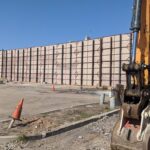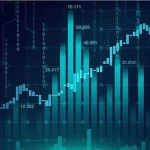A “fixed expense” is a recurrent outlay that does not fluctuate by a large amount or very often. For instance, a company’s monthly rent payment will be the same no matter how much money it makes. In normal business operations, it’s feasible that this cost won’t change for the company. In contrast to fixed costs, which remain constant regardless of the level of activity, variable costs shift as needed. Variable costs consist mostly of direct materials, commisions, and piece rate labour.
If the company’s production or input is rising or decreasing, the fixed expenditures spent per unit of output may also increase or decrease. The rent a firm must pay amounts to $2 per unit of product if it produces 20,000 units of that product and pays a total of $40,000 in rent. The rent per unit will be $4 if the company only produces 10,000 due to low demand. So What is a fixed expense?
Just what are the constituent parts?
Understanding the many parts that go into a company’s fixed costs is essential. If a company has more fixed costs, it will often need to maintain a higher level of revenue. Throughout its operations, a company will always incur several forms of fixed costs.
In addition, there are several fixed manufacturing overhead expenses, the sum of which constitutes a significant portion of the company’s total outlays. Costs in manufacturing include depreciation of machinery and equipment, salaries and benefits for factory managers, and the price tag for keeping the facility running smoothly.
When accountants have to divide up fixed costs across several different output items, they’re faced with a complex challenge. Allocating expenses properly is essential to calculating COGS and inventory value. A manager at each manufacturing facility will distribute fixed costs according to the amount of machine hours worked. It’s important to remember, however, that the cost per machine hour doesn’t reveal anything about the nature or behaviour of those costs. This is an issue that needs careful examination.
In the Long Run, What Happens?
The idea of fixed costs only applies in the short term, so keep that in mind. Over a longer time frame, the price of just about everything is expected to change, from rent and labour to depreciation and maintenance expenditures.
The fixed expense may increase or decrease depending on the outcome of the business restructuring. If a business needs to lower its monthly rent expenses, it might consider occupying fewer space. The idea here is that a company can’t avoid spending money on fixed expenses, even if they respond less quickly to changes in the market than do variable costs.
The Value of Constant Expenses
In the event of lower-than-anticipated sales, a firm with high levels of fixed costs will see a precipitous decline in its profit margin. This raises the odds that these companies’ share prices will drop and their profit margins would shrink. It seems to reason that if a firm has an increase in sales but no change in its expenditures, it would see an increase in its profits. Always remember that a company has to recuperate all of its fixed expenses before it can show a profit.
Conclusion
In order to make a profit, a business has to have sales that are higher than its fixed expenses. This means that if the fixed expenses are $5,000 and the cost of selling a single unit is virtually zero, the firm must have sales of at least $5,000 in order to break even.








